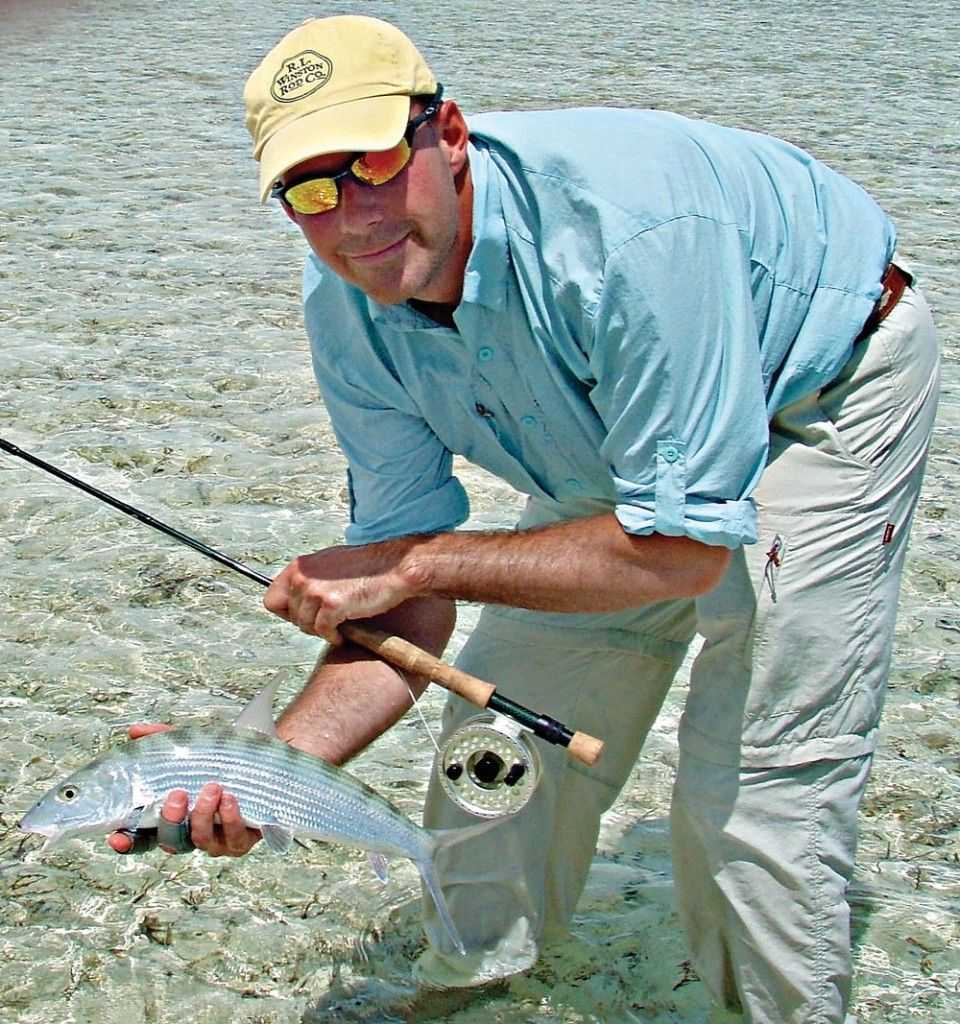In previous issues of this magazine, I have chronicled my travels and research on Grand Bahama for Ghost Stories, a research project on the history of Bahamian bonefishing. This edition will be focused on DIY angling Grand Bahama.
While conducting interviews from the West End all the way to McLeans Town and Deep Water Cay in the east, I had the great fortune of wetting a line. Although I traveled unused logging roads to the north side of the island to explore the pristine habitat, all of my angling took place on the more accessible south shore.
The south side of Grand Bahama provides a plethora of angling opportunities both inshore and offshore. Coral reefs extend the length of this southern shore, providing refuge from pounding surf for many inshore species. These reefs give anglers chances from shore for a mixed bag including, bonefish, permit, barracuda, triggerfish, and a host of other “reef” fish.
While I found large schools of bonefish in the West End area, it is the eastern end of the island that offers more extensive, less developed flats and consequently more fish. Stunningly beautiful blue holes dot the southern shoreline, and these geological marvels provide vital nutrients, safety, and critical key water temperatures for fish when conditions are extreme.
Flats on the south side are fairly narrow, constrained by the reef and deep water, and therefore easier to fish than typical expansive Bahamian flats. Shoreline substrates vary from smooth sand to grassy and rocky broken bottoms. Wading boots are a must for safety. My R.L. Winston Boron 8-weight and Nautilus reel performed flawlessly in all of these conditions, and many bonefish were subdued as well as other species. Typical 12-foot fluorocarbon leaders worked well. I prefer fluorocarbon for its abrasion resistance, sink rate, and because the water is crystal clear. Standard size 2 and 4 bonefish flies like Gotchas and Charlies caught fish. A mix of colors are needed to suit the varied bottom, and differing weights are also critical to ensure flies are near the bottom, regardless of the depth and tide phase. I found tan, olive and gold colors worked well, and I was glad to have some tiny flies (sizes 6, 8 and even 10) for the ever-present and challenging triggerfish.
The south side of Grand Bahama is almost a guaranteed place to find fish. Anglers with a desire to explore will likely be all on their own, walking stunningly beautiful Bahamian flats. Guided opportunities on Grand Bahama abound. Most of these guides take clients to the north side of the island, so DIY anglers fishing the south shore will be all on their own… with the fish of course!
In the next edition, I conclude this series on Grand Bahama by describing my stay at North Point Riding Lodge, where Bonefish can be caught right from the beach. It will include the interviews conducted there and at Deep Water Cay Lodge in the East End. For more information on research progress, please visit, http://tomkarrow.wix.com/bahamas-guide-tek.
